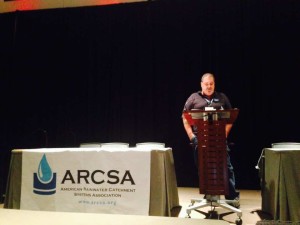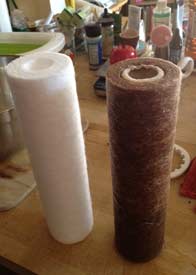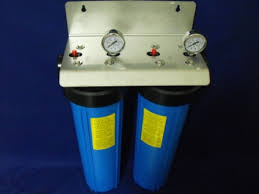 RainBank Rainwater Systems president Ken Blair is ARCSA’s Western Regional Representative
RainBank Rainwater Systems president Ken Blair is ARCSA’s Western Regional Representative
RainBank Rainwater Systems president Ken Blair is excited to accept the position of Western Regional Representative for the American Rainwater Catchment Systems Association (ARCSA), whose mission is “to promote sustainable rainwater harvesting practices to help solve potable, and non-potable, stormwater and energy challenges throughout the world.”
Ken has more than ten years’ experience in design and installation of systems and supports ARCSA as a lifetime member. He is an accredited professional, inspector specialist, as well as a published contributor to magazine articles, case studies, books and publications.
Ken will be reaching out to local agencies and community organizations to educate them on best practices and benefits of rainwater collection and sustainable rainwater harvesting. RainBank Rainwater Systems will share scheduled ARCSA events on our blog, as well as lending a hand with ARCSA events and education classes. Ken will be an advisor to the education committee of ARCSA and will assist with planning of local events and classes.
If you are interested in more information, or have questions or comments concerning rainwater collection, please contact Ken Blair using the easy form below.


 For non potable, toilet flushing and laundry facility systems, it is recommended to add a 10 Micron carbon filter. This filter will remove organics and inorganics, color and odor from you stored rainwater. By having the cheaper 5 micron sediment filter upstream of the more expensive 10 micron carbon filter you will save money by not fouling the carbon filter with particulate less than 5 Microns. Depending on how much use for this type of system, a 4″ x 20″ cartridge will mean less changing of filtration. If the system is to be shut down for a lengthy period, it is recommended that filter cartridges be removed so water will not become septic by decaying bacteria.
For non potable, toilet flushing and laundry facility systems, it is recommended to add a 10 Micron carbon filter. This filter will remove organics and inorganics, color and odor from you stored rainwater. By having the cheaper 5 micron sediment filter upstream of the more expensive 10 micron carbon filter you will save money by not fouling the carbon filter with particulate less than 5 Microns. Depending on how much use for this type of system, a 4″ x 20″ cartridge will mean less changing of filtration. If the system is to be shut down for a lengthy period, it is recommended that filter cartridges be removed so water will not become septic by decaying bacteria.